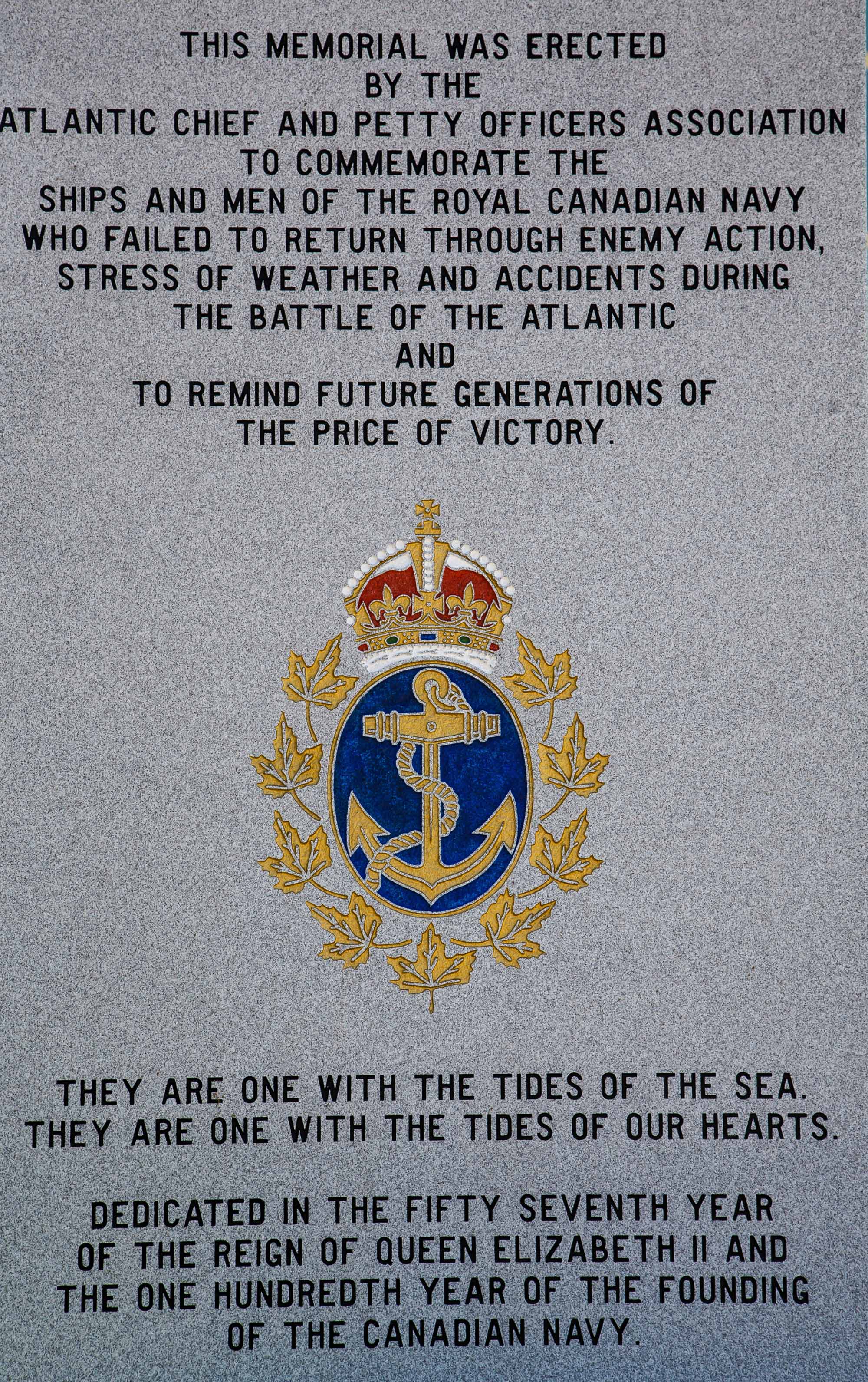HMCS Esquimalt was the last Canadian warship lost to enemy action in the Second World War. The ship was on an antisubmarine patrol around the approaches to Halifax harbour when it was torpedoed by German submarine U-190. Esquimalt sank on 16 April 1945; in total, 44 of 71 crew members died — many of them from exposure while waiting to be rescued.

Accidental Encounter
In mid-February 1945, with the Second World War almost over — Russian troops were at that moment preparing for the imminent siege of Berlin, the capital of Hitler’s Third Reich — U-190 had been ordered to Halifax for a final, routine mission: to sink Merchant Navy cargo ships. In the engine room of U-190 was 22-year-old Chief Engineer Werner Hirschmann.
In the early morning of 16 April, Hirschmann and his crew were idling below the surface in the Halifax harbour area, when they believed that an Allied warship had detected them. As U-190 moved to periscope depth, the crew’s worst fears seemed to have been confirmed: the U-boat captain saw HMCS Esquimalt rapidly moving toward their position. At approximately 6:30 a.m., U-190 responded to the perceived threat.
“In a mode of defense,” recalls Hirschmann, “[we] shot one torpedo, an acoustic torpedo which hit that warship.”
Above the water on board HMCS Esquimalt, with his eyes and ears glued to the ASDIC (sonar), Canadian Seaman Joe Wilson was shocked to hear the impact of a torpedo into his ship’s hull. In fact, the ASDIC had failed to detect the nearby U-boat. Moments earlier, Esquimalt’s final, routine radio transmission to shore, at 6:27 a.m., made no mention of any ASDIC contact. As Wilson recalls, “I didn’t hear no echo or anything like that from a submarine.”
The torpedo punctured the starboard side of the engine room; the ship sank in four minutes, too fast to send out a distress signal. It's believed that 28 men went down with the Esquimalt. The remaining 43 scrambled onto Carley floats (flotation devices consisting of knotted ropes and planks of wood), or clung to the sides of the floats.
Delayed Search
The Esquimalt failed to appear at the 8:00 a.m. scheduled rendezvous with her sister ship, HMCS Sarnia. As Lt. Roberty Douty, Sarnia's commander, later told the Board of Inquiry into the Esquimalt sinking:
"We tried from 0800–0950 to raise [Esquimalt] on [radio]. Having been unable to do so and not sighting Esquimalt in the area, I signaled the Commander of the Port the fact that [Esquimalt] had not arrived and that I was proceeding independently in execution of his order to sweep down Halifax Channel. It was also reported to me that they were trying to raise Esquimalt from shore on various wavelengths but had been unable to do so."
At 9:50 a.m. a search was started. Sarnia soon heard pings on the ASDIC and, believing a U-boat was nearby, dropped depth-charges in the area before resuming the search for the Esquimalt.
Said Douty: "We were suspicious that something might have occurred and after the (Sonar) contact, I was thoroughly convinced of what had happened."
According to Sarnia Petty Officer Liam Dwyer: The [Port] War Signals Station in Halifax had contacted the Esquimalt only moments before the torpedo struck, attempting again at 7:41 a.m. on several frequencies, but got no answer. This information, which might have saved many of the Esquimalt’s crew, was not reported to the harbour's officer of the watch until 10:20 a.m. It was nearly four hours after the Esquimalt went down before a search began.
The survivors were left in the freezing waters for more than five hours. In addition to the 28 sailors believed to have died when the ship sank, another 16 are believed to have died of exposure, on the open water, before the Sarnia found them.
The Second World War ended a mere three weeks later; HMCS Esquimalt was the last Canadian ship lost during the conflict. More tragic still, the disaster never should have happened. As Werner Hirschmann poignantly recalls, “The tragedy of it [is that] we assumed they had found us, but in actuality, they did not.”

 Share on Facebook
Share on Facebook Share on X
Share on X Share by Email
Share by Email Share on Google Classroom
Share on Google Classroom








